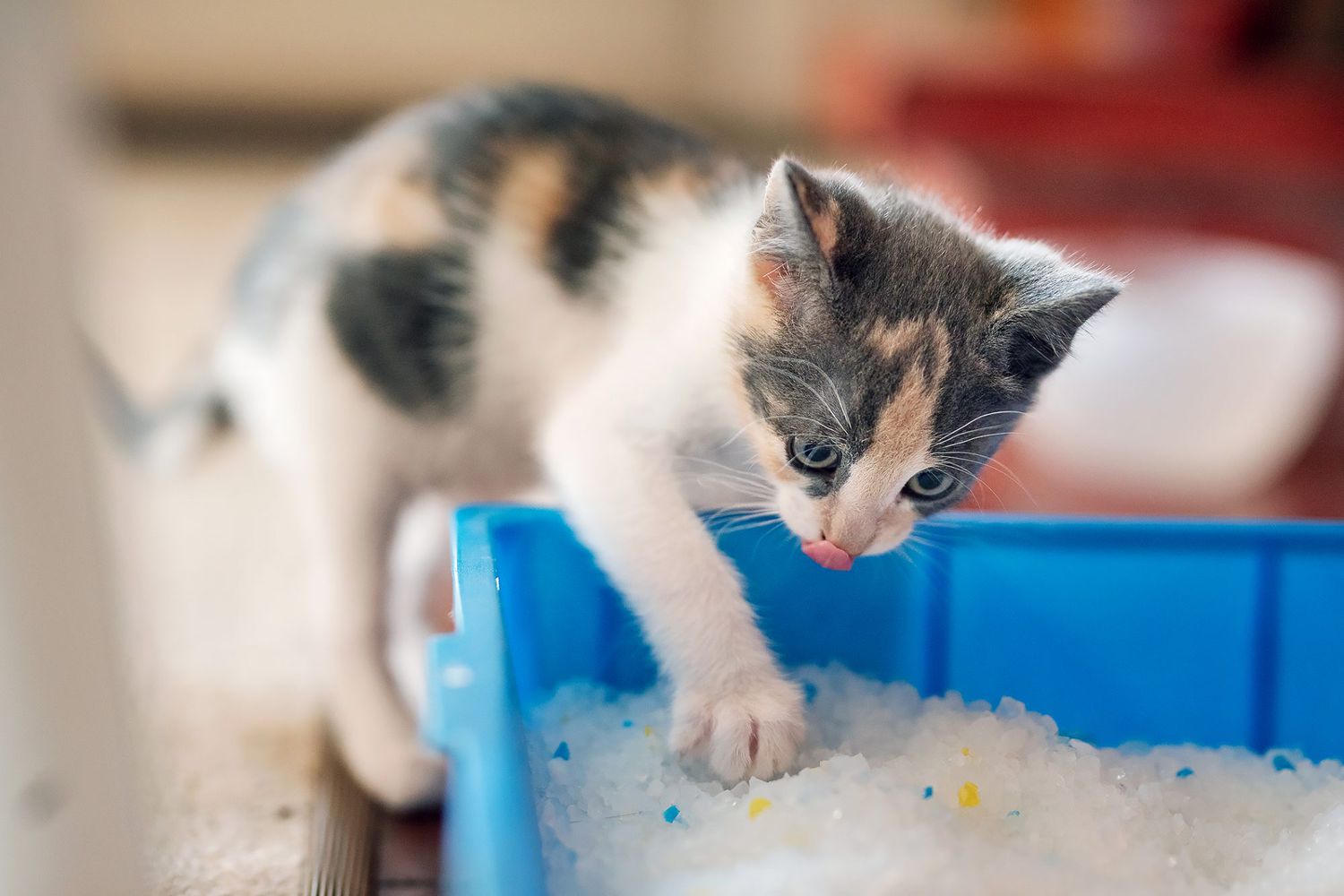Do you have a cat that has trouble using the litter box? Training cats to use the litter box correctly can be incredibly difficult, and it often requires patience and resilience – but with the right tips and tricks, it doesn’t have to be so complicated!
This blog post’ll review some of the best tips for successfully training cats to use their litter boxes. From choosing the right type of litter to setting up a designated area away from other pets in your household, these simple bits of advice will help you navigate this process easier. Let’s get started!
:strip_icc()/litter-robot-dYnqzfx7Dk8-unsplash1-61047ad7c5264582aa7c4fb7a1537cae.jpg)
10 Best Tips to Train Your Cat to Use the Litter Box
1. Choose the Right Litter
First and foremost, choosing the type of litter your cat will enjoy using is important. Consider trying out a few different types – some cats prefer scented or clumping litter, while others may be more comfortable with unscented options. Take some time to experiment and see what works best for your kitty!
2. Establish a Designated Area
When setting up the litter box in your home, place it where your cat can feel safe and secure. Avoid putting the box near noisy appliances like washing machines or vacuum cleaners that could startle them while using it. Additionally, if you have multiple pets in the house, it’s also best to set up a designated area away from other animals to prevent territorial behavior.
3. Clean the Litter Box Regularly
Cats are usually very particular about cleanliness, so keep their litter box spiffy and free of clumps or debris. Once every week at minimum, scoop out all solid waste and thoroughly rinse the box with warm water and soap. This will ensure your cat always uses a clean space for their business!
4. Keep Disruptive Noises to a Minimum
Since cats are easily startled by loud noises, try not to talk too loudly or make sudden movements while your pet is in its litter box. This could cause your cat to become scared and discouraged about using the area in the future.
5. Stay Positive (and Patient)
Above all else, it’s important to remain as positive and patient as possible throughout this process – cats can be incredibly stubborn creatures, so don’t give up if progress is slow! Instead, continue offering rewards like treats or praise when your cat successfully uses its litter box. Over time, you should see an improvement in their behavior.
6. Utilize Cat-Friendly Deterrents
If your cat continues struggling with proper litter box usage, consider investing in a few pheromone-based deterrents specially designed for cats. These products emit a smell that can help calm anxious cats and encourage them to use the designated area.
7. Use an Appropriate-Sized Litter Box
When it comes to litter boxes, size does matter! Ensure you’re selecting one large enough for your cat to comfortably move around – otherwise, they may not feel comfortable using it.
8. Consider Using Multiple Litter Boxes
If your home has multiple levels or stories, consider setting up extra litter boxes on each floor so your cat doesn’t have to travel too far when nature calls. This can also be beneficial if you’re dealing with multiple cats in the same household, as having more than one box will help prevent territorial disputes.
9. Monitor Your Cat’s Health
If your cat suddenly starts avoiding its litter box, check in with your vet to rule out any medical issues that could be causing the behavior. In some cases, cats may stop using the box due to issues such as stress or bladder infections – so it’s always best to double-check with a professional first.
10. Try Different Litter Box Designs
Finally, if all else fails, consider buying a litter box with a different design or shape – for example, hooded boxes are great for cats who prefer more privacy while doing their business. Experimenting is key here – you never know what type of litter box your pet might prefer!
Following these simple tips, you can easily train your cat to use its litter box. With patience and perseverance, you’ll soon have a furry friend happy and content with their designated area.

Advantages of Training Your Cat to Use the Litter Box
Convenience
A litter box is much easier to maintain than taking your cat outside whenever they need to go.
Odor Control
A well-maintained litter box will help reduce odors around the house, ensuring a pleasant atmosphere for everyone.
Safer for Pets
Having an indoor litter box means you’re not exposing your pet to risks of going outdoors, such as predators or cars.
Less Mess
With a properly trained cat, you won’t have to worry about messes left behind in other parts of the house from their bathroom breaks!
Easier Cleanup
Cleaning a litter box is far less time-consuming than mopping cat urine or feces around the house.
More Hygienic
A litter box helps keep your pet’s waste contained, reducing the risk of harmful bacteria and viruses spreading throughout the home.
Healthy Habits
Training your cat to use the litter box will also encourage them to develop good hygiene habits that will last a lifetime!
By following these simple steps, you’ll be well on your way toward successfully training your cat to use its litter box easily. With patience and consistency, you can ensure that everyone in your household (including your furry friend) is happy and healthy.

Uncovered versus Covered Litter Boxes
In addition to the tips above, it’s also important to consider whether you’d prefer a covered or uncovered litter box. While both varieties can be useful in certain situations, some key differences should be considered before purchasing.
Uncovered Litter Boxes
Uncovered litter boxes are typically best for single-cat households and those with cats who do not have any issues with spraying or making messes outside of the designated area. They’re also easier to clean than their covered counterparts since they provide better access to the entire litter surface.
Covered Litter Boxes
On the other hand, covered litter boxes are ideal for multi-cat households or those with cats who have issues with spraying outside of the designated area. The cover helps contain odors and gives cats more privacy while using the box, which can be beneficial if your cat prefers that environment.

FAQs
Do cats need light to use the litter box?
No, cats don’t necessarily need light to use the litter box. However, having a nightlight nearby can help make it easier for them to find the box in the dark. Additionally, ensuring the area is well-ventilated and free from debris or obstructions will ensure your cat feels comfortable using it. Most cats will eventually get the hang of it if you remain patient and dedicated to their training.
What type of litter should I use?
When selecting the right type of litter for your cat, opt for something natural and unscented, as these are less likely to cause respiratory irritation or other health problems. Clumping litters are also easier to clean and scoop up quickly, which makes them an ideal choice for busy households! If you need help determining which type is best suited for your cat, talk to your veterinarian for advice.
Should I provide a designated area away from other pets in the house?
Yes, having a designated area away from other pets in the home is important when training cats to use their litter box. Cats tend to be territorial and prefer having their own space – providing a separate area will help ensure they feel secure while using the cat litter box.
It’s also recommended to place the litter boxes in a quiet spot away from foot traffic – this will help reduce any potential stress or anxiety associated with using the box.
Is it difficult to train a little kitten?
Training cats of any age can be challenging, but kittens usually learn more quickly than adults. Using positive reinforcement and reward-based methods is often the most effective way to get them accustomed to using the litter box. It’s important to ensure you have plenty of patience during this process – but with consistency and dedication, even the most stubborn kittens can eventually be trained.
Does litter depth affect the cat to use of the litter box?
Yes, the depth of the litter can impact your cat’s use of the litter box. It’s recommended to keep the litter between two and three inches deep any deeper than that, and your cat may start having difficulty digging or burying their waste. Additionally, more than one cat in the home will require more litter for adequate absorption.
How many litter boxes should I have?
Regarding litter boxes, it’s best to provide one box for each cat in your home, plus an extra one. Sufficient litter boxes will help reduce territorial issues and encourage your cats to use the box regularly. Clean litter boxes every day and refill them with fresh litter as needed. In this way, litter train becomes easy.
Do cats prefer open or closed litter boxes?
It depends on the cat’s individual preferences. Some cats might feel more secure in an enclosed box, while others may prefer having open access to their litter box. Experimenting with different types of boxes and observing your cat’s behavior can help you determine which one works best for them.
In how many days do little kittens get trained?
Litter training kittens usually takes several weeks to a few months. It’s important to be consistent with your training methods and provide plenty of positive reinforcement when they do something right, which will help speed up the process.
How do I know if my cat doesn’t like litter?
If your cat refuses to use the litter box or exhibits other signs of distress, such as scratching outside the box or urinating in other areas of the home, they may not be comfortable with the litter you’ve chosen. In this case, it’s best to try out different types of litter until you find one that suits them.
Conclusion
Hopefully, this blog post has given you some helpful tips and tricks for training cats to use the litter box. With patience and consistency, your cat should soon start using the cat’s litter box correctly. Remember to be patient and understanding during the process – it may take time, but your furry friend will eventually get the hang of it.


